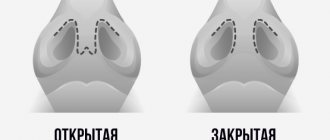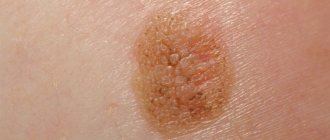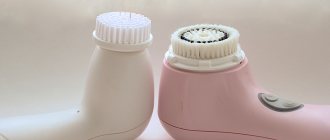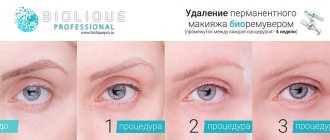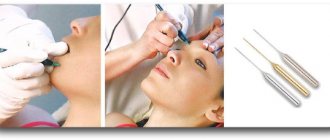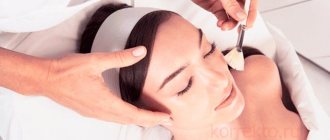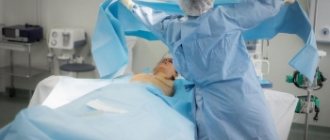Plastic surgeons achieve perfect, natural breast shapes with augmentation mammoplasty, using the optimal type of access. There are 3 main ways to install implants:
- Periareolar (through the semicircle of the areola);
- Submammary (submammary);
- Axillary (axillary).
Depending on the initial size and anatomical features of the breast, the doctor selects the shape, size of the implants and the most appropriate access, taking into account the patient’s wishes. Each method has its own characteristics, strengths and weaknesses, which the head of the plastic surgery department at the clinic named after. N.I. Pirogova Oleg Leonidovich Nesteruk.
Features of the operation
Mammoplasty through the areola has the following advantages:
- The method is characterized by a low probability of scar formation. The doctor dissects the tissue along the edge of the areola - in this area the skin is prone to rapid healing.
- Quickly achieve the expected result. This method of bust enlargement, such as periareolar placement of an implant, allows you to evaluate the effect already 4 weeks after the intervention.
- The breasts take on the most natural appearance possible.
Another advantage of surgical breast augmentation through the areola is the ability to quickly return to everyday activities.
Installing implants through the periareolar approach does not have any significant disadvantages.
What is submammary access?
The surgeon makes incisions (up to 4 cm) along the contour of the natural fold under the breast. Then, forming a pocket between the tissues of the mammary gland and pectoral muscle, a prosthesis of the required size is installed. Submammary access is suitable for installing any implants.
Advantages
- Good cosmetic effect;
- There is no risk of damage to the milk ducts;
- The doctor can install a prosthesis both under the pectoral muscle and under the gland;
- There are no restrictions on the shape and size of the implant.
Minuses
- Submammary access may be aesthetically unfavorable if the patient initially has poorly defined breast tissue and fatty tissue, and also has a tendency to develop keloid scars.
Who might suit it?
This type of access has successfully proven itself in world practice. It is safe for women, removes restrictions on the location of installation (under the mammary gland or under the muscle) and on the size of implants. Submammary mammoplasty is suitable for almost all patients.
Preparing for surgery
To enlarge the bust surgically, a woman needs to undergo an examination. Diagnostics include:
- Fluorography.
- Laboratory examination of blood (clinical, biochemical), urine. In addition to standard tests, coagulability, blood type and its Rh factor are determined; glucose level.
- ECG.
- Ultrasound of the mammary glands, determining the degree of their blood supply.
Before the operation, you need to consult an anesthesiologist. Additional types of diagnostics are prescribed on an individual basis. Taking into account the survey responses, it is determined that breast surgery will not have a negative impact on the woman’s body.
At the stage of preparation for surgical breast augmentation, the optimal type of endoprosthesis is selected. The patient’s body type and her expectations from the upcoming intervention are taken into account.
Technique
The process of how a breast lift is performed does not vary much from one clinic to another or from one doctor to another. The operation begins with the application of preoperative markings to the places where incisions will be made to access the intervention area. The scheme is developed before the operation together with the patient, taking into account her individual anatomy, current situation and desired result.
When the patient gets on the operating table, the surgeon makes incisions according to this pattern. The doctor then excises excess skin, fat and glandular tissue and repositions the nipple-areolar complex. At this stage, the surgeon is required to be extremely careful and competent, since violation of the technique can lead to loss of sensitivity in the bust area. It should be noted that a successful operation does not affect the ability to breastfeed in the future, since the integrity of the milk ducts is not affected.
After all manipulations are completed, sutures are applied, a fixing bandage is applied, drainage is installed and compression garments are put on. In the future, underwear will be required to be worn around the clock for three months.
How is breast augmentation surgery performed through the areola?
Periareolar mammoplasty involves several stages:
- Performing anesthesia.
- Treating fabrics with an antiseptic solution.
- Skin incision, providing periareolar access.
- Implant placement.
- Layer-by-layer suturing of the surgical wound.
- Applying a sterile dressing.
- Removing the patient from anesthesia.
Throughout the entire period of intervention, the surgeon performs coagulation (cauterization) of the blood vessels, and the anesthesiologist monitors the woman’s condition.
Stories from our patients:
Elena24.12.2021
I want to thank the wonderful surgeon Tatyana Aleksandrovna Ivanchenkova for my new body! Simply delighted with the changed proportions, new me! The operation took place on November 11, 2021, lasted 5 hours, a large volume including mini-abdomino, legs, arms, back, sides, lipofilling, and in addition, repeated mammoplasty of the breast, which was performed by Tatyana Alexandrovna’s colleague, the highly respected Valery Grigorievich Yakimets. I liked Tatyana Aleksandrovna from the first consultation: confident, calm, her vision of the desired result coincided 100% with mine, so I didn’t even consider other surgeons. The clinic has a well-coordinated team, a real team, I especially want to thank the administrator and main organizer of the processes, Alexandra, who resolved all my questions as quickly and competently as possible. The operation itself took place in one of the best clinics in Moscow at the moment, K+31. This is a well-equipped hospital complex with attentive medical staff. Postoperative rehabilitation went quickly, under the strict control and examinations of Tatyana Alexandrovna. I liked her sense of humor, which was always appropriate and supportive. Tatyana Aleksandrovna is an “old school” surgeon, very experienced, so I didn’t feel fear or anxiety, there was trust, which justified itself. 20-year-old girls (I'm 42!) can envy such a waist, belly and hips. I wish every woman to experience the same emotions after the Transfiguration in the hands of Tatyana Alexandrovna Ivanchenkova!
Read moreHide
Irina Shevchenko05/03/2021
To the best plastic surgeon in Russia!!!!!!!!!!!!!!!!!!!!!!!! I would like to express my deep gratitude to Valery Grigorievich for his professionalism and my beautiful face. She had surgery on September 31, 2020, at the height of Covid19 restrictions. The clinic complies with all the necessary requirements for conducting surgery during Covid19. The operation was VERY SUCCESSFUL. Coming out of anesthesia was easy and not noticeable. My face is getting better and better every day and every month. Also, many thanks to the entire Estet Clinic team, everyone is in their place and all great professionals. Highly recommend!!!!!!
Read moreHide
Yulia29.01.2021
Many thanks to the wonderful doctor Valery Grigorievich! I had rejuvenation surgery in 2016. Several years have passed, nothing has changed, only everything has gotten better! Especially the neck, you have no equal in this! There is no need to wait for quick rehabilitation and quick results! Everything will be great, but in a year... At least in my case, everything is individual! But, you are the best! I hope to meet you again, health permitting!
Read moreHide
T-cut
It is useful for patients with severe ptosis to know how a breast lift using the anchor method works, since this technique is the most effective for this situation. The surgical technique is very complex, but the final result is impressive. During the operation, a considerable amount of tissue is excised. This technique involves the largest number of cuts, but you should not be afraid of any marks. As with other types of lifts, much depends on the skill of the surgeon and the patient's approach to rehabilitation. If everything was done correctly, then only thin pale stripes will remain at the incision sites, which are very difficult to see.
Rehabilitation
You should sleep on your back for a month from the date of surgery. Also, in the postoperative period, the patient needs to wear a compression bra - it helps the breasts maintain their natural shape. You should not shower until the stitches are removed. After removing the threads, a barely noticeable scar remains, which disappears on its own within 2-3 months. Often this does not require any additional measures.
See all photos
Photos of patients
Look:
- Front
- Three quarters
- Profile
- Behind
Possible complications
Occasionally, mammoplasty through the areola leads to the development of complications, including:
- Bleeding. Caused by damage to the veins or capillaries of the mammary glands. Bleeding in the postoperative period occurs in cases where a woman ignores the doctor’s recommendations: sleeps on her stomach or lifts weights.
- Implant rejection. This complication arises due to the individual characteristics of the patient’s body. Signs of implant rejection are pain, increased body temperature, and severe deformation of the gland.
- Inflammation of tissue along the suture line. A complication develops when bacterial microflora enters the surgical wound. Signs of inflammation - increased body temperature; swelling, redness of the breast, pain when touching the mammary gland. To eliminate the side effect and ensure proper treatment, the implant is removed.
- Increased sensitivity of the mammary glands. A similar complication occurs when the nerve fibers running inside the mammary glands are damaged. In this case, already during the rehabilitation period, the areola and nipple become more sensitive.
By following the recommendations of the plastic surgeon, these complications can be avoided.
Provided the patient feels normal, the plastic surgeon discharges her one day after the operation.
Periareolar breast lift
The problem of sagging breasts can be solved by performing breast lift plastic surgery (mastopexy). The method of performing this plastic surgery is determined by a plastic surgeon based on medical indications only during a face-to-face consultation. One of the factors influencing the choice of mastopexy technique is determining the degree of breast ptosis in relation to the natural submammary fold.
In plastic surgery, there are several degrees of breast ptosis:
- The first degree of ptosis is characterized by drooping of the nipple 1 cm below the inframammary fold.
- In the second degree of ptosis, the nipple is lowered below the fold by 1-3 cm.
- The third degree of ptosis is diagnosed when the nipple-areola complex descends below three centimeters in relation to the natural fold.
- Glandular (glandular) ptosis is formed as a result of overstretching of the skin of the lower pole and subsequent drooping of the glandular tissue itself.
Features of periareolar breast lift.
Periareolar breast lift is indicated only for patients with the first and second degree of breast ptosis, glandular ptosis with a small breast size and is considered the least traumatic technique of all types of breast lift. In fact, we are only talking about moving the nipple-areolar complex to a higher position by no more than 3-4 cm and a slight reduction in the skin “cover” of the breast. This is quite enough to restore the beautiful shape of small breasts.
A periareolar lift also helps to reduce the diameter of the areolas if they are large or to even out asymmetry.
In case of third degree ptosis, a breast lift with a vertical or T-shaped scar is performed.
During a periareolar breast lift, an incision is made along the edge of the entire circumference of the areola, excess skin is removed and a neat cosmetic suture is applied to the incision sites, which will be hardly noticeable over time.
A periareolar lift can be performed under local anesthesia and the patient can return home the same day.
Postoperative period.
The postoperative period is quite mild and does not cause disability.
During the entire postoperative period (1 month), the patient will wear special compression garments and come to the clinic for examinations with the surgeon:
- in 5-7 days;
- In 2 weeks;
- after 1 month;
- in 6 months;
- after 1 year.
Result after surgery.
The final result of the operation can be assessed in approximately 6 months.
How can you see the result of your future breasts before plastic surgery? What is 3D breast modeling?
Great news for Dr. Sviridov’s patients! Even before plastic surgery, you will be able to see its results. This became possible thanks to read more…
What does the mammary gland consist of?
The mammary gland is a collection of milk-producing microscopic glands and milk ducts. The body of the mammary gland is divided into 12 cone-shaped lobes, which can vary significantly in size. Milk from each lobe is transferred through the central duct to the nipple. Read more…
